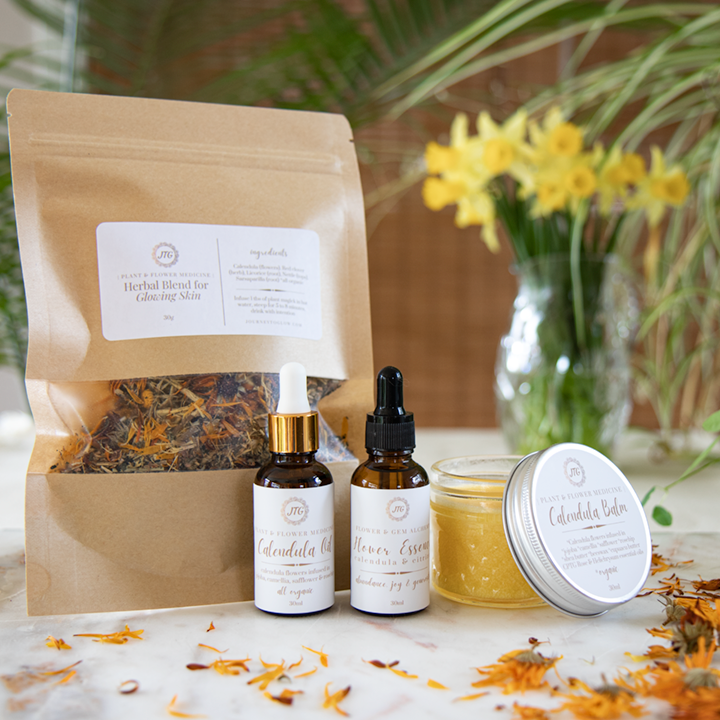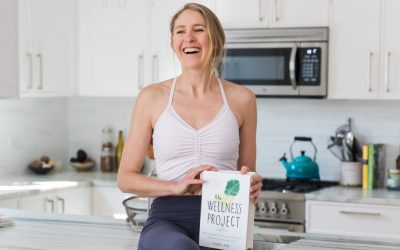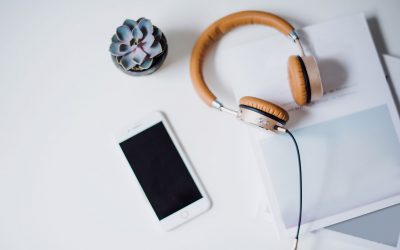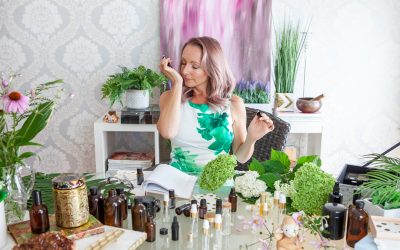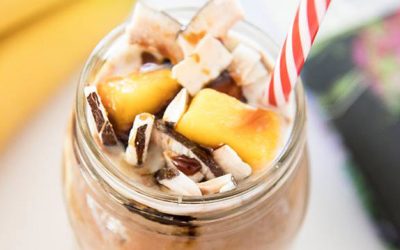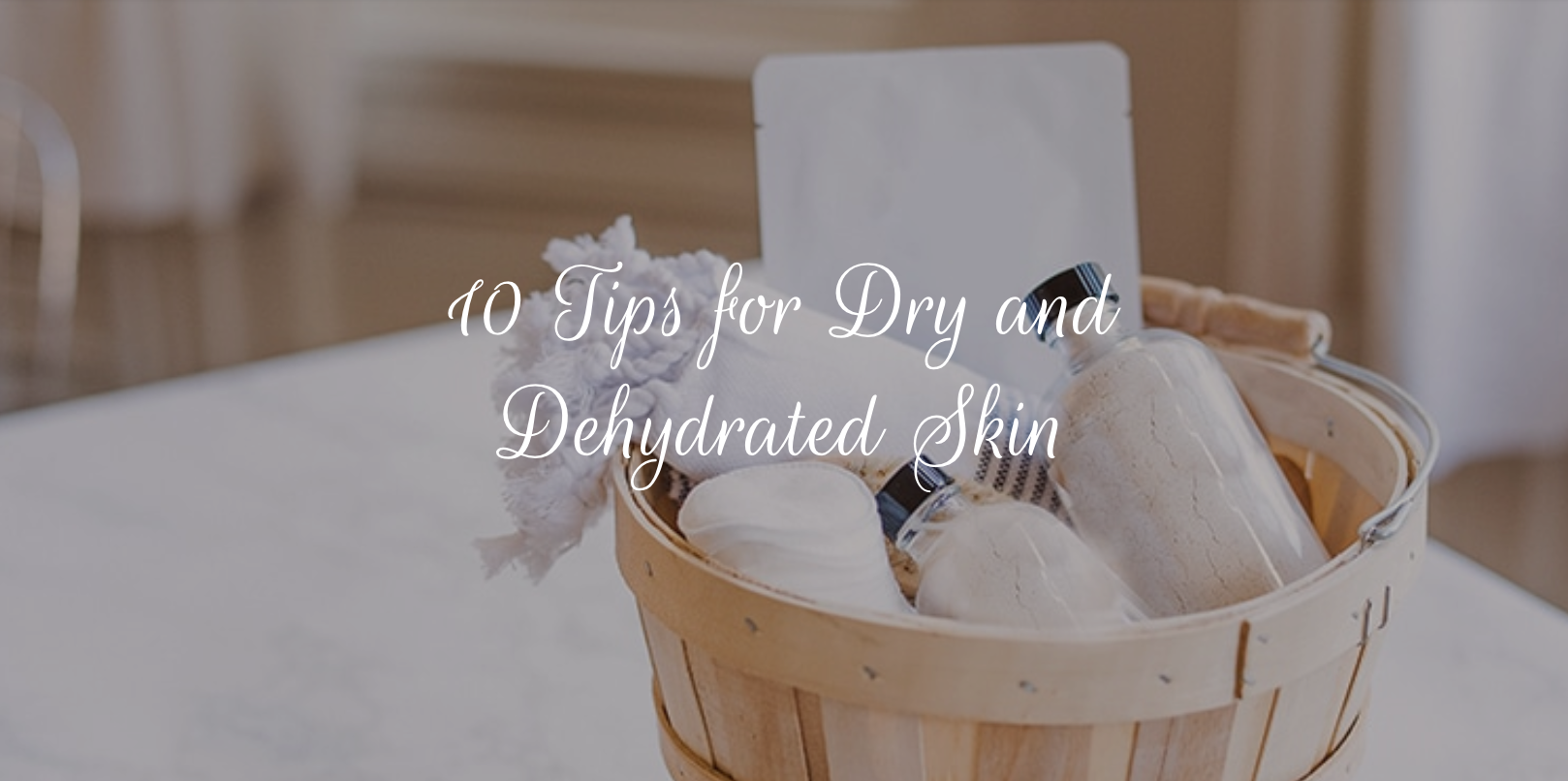
10 Tips for Dry & Dehydrated Skin by Sara Sumic of Healthy Skin Glows
{Edited December 10th 2020}
Battling dry and/or dehydrated skin, especially in the wintertime, is hard.
How to get some relief?
First, let’s remember that dry skin is not just a surface problem. We need to take a close look at our diet, too. This is why I included tips for both skincare and diet.
Our hormones and what we eat have more impact on our skin than what we apply on it, whether we like it or not.
Estrogen, for example, helps our skin be more plump and moisturized.
All that said, let’s understand what makes the skin moisturized and what causes dry and dehydrated skin so that we can fix the issue the best we can.
Trans Epidermal Water Loss (TEWL), or loss of water from our skin, is an ongoing process. The water lost gets replaced by the water we eat and drink.
It is important to remember that it is WATER that makes our skin moisturized.
Lipids (oily substances in the skin) are there to lock in that moisture into our skin and slow down TEWL, which makes the skin naturally moisturized.
Healthy skin has another mechanism of slowing down that loss of water: A robust skin barrier.
The skin barrier is the surface layer of our skin, composed of layers of dead skin cells. They block not only water from escaping but also the entry of unwanted substances (pollutants, toxins, etc) into our skin.
Sebum, a mix of waxy, oily substances is also there to slow down the evaporation of water from our skin into the environment.
However, when the air around us is dry (due to the winter, air conditioning, etc), water molecules move from the place of their abundance (our skin) to where there is very few of them (the air around us).
This is why the skin gets dry during this time of year even though it otherwise isn’t!
Now let’s get straight into how to alleviate dry skin!
1. Layer LOTS of moisture and humectants under a moisturizer or a facial oil
To counteract the excessive loss of water from the skin, we need to first bring back lots of moisture (and humectants to hold it) into our skin and then LOCK IT IN with an effective occlusive.
Humectants are molecules that act like little sponges, holding onto water molecules. This helps to keep the moisture in the surface layers of our skin, exactly where we need it!
The job of occlusives is to form a breathable barrier that will slow down evaporation of water from our skin.
Humectants: hyaluronic acid serum, fresh aloe vera, glycerin.
Hyaluronic acid products we love: GOOPGLOW 20% Vitamin C + Hyaluronic acid Serum and Tata Harper Water-Lock Moisturizer.
Occlusives: pure, unrefined shea butter, moisturizers rich in occlusives (plant oils, ..), squalane oil (great for acne-prone skin).
This star product from Alpyn contains squalane, aloe, glycerin and targeted plant powered ingredients to nurture the skin.
{Scroll down for more recommended products}
2. Take a close look at your cleanser (VERY important!)
Does your cleanser leave your skin tight? Like you have to immediately apply a moisturizer, otherwise, your skin gets itchy?
Does your cleanser foams excessively?
If the answer to any of the above was yes, picking a very gentle, pH-balanced cleanser can help your dry skin more than any moisturizer! Here’s a few we like: Josh Rosebrook Complete Moisture Cleanse, Pai Skincare MiddleMist Seven PH Balance Cleanser.
This is because a harsh cleanser strips your skin of the precious lipids your skin needs to be moisturized.
3. Don’t use high-linoleic acid oils
Oils high in linoleic acid, such as rosehip oil, hemp oil and grapeseed oil are actually not suitable for dry and dehydrated skin.
They can be, but only if within a well-formulated product. However, on their own, they can dry out the skin because linoleic acid in those oils emulsifies the sebum, which can lead to dryness. Linoleic acid also acts as a weak DHT blocker, which can further reduce sebum production.
4. Use a cold water humidifier
Remember how I said the dry air around us sucks the moisture from our skin?
One great way to remedy this is to bring back more moisture into the air, which slows down the TEWL.
Cold water humidifier keeps the optimal moisture in the air and can make such a difference in your skin, especially if you live in a dry climate.
I often put it on for one hour before bedtime, with a few drops of lavender essential oil. If the air is really dry, you can even set it to 6 hours in your bedroom, and wake up with beautiful dewy skin!
5. Get extra help from physiological lipids when needed
Layering an insane amount of moisture and humectants under a good occlusive doesn’t help?
Following my other dietary tips for at least a month doesn’t help either?
Cue in the physiologic lipids.
These are molecules like ceramides and cholesterol, natural to our own skin.
When applied to the skin, they don’t just sit there. Instead, they penetrate through the surface layer of our skin, where they are taken up by the living epidermal cells and packaged into a secretory vesicle (the ‘lamellar body’).
The contents of these vesicles are then secreted back into the surface of the skin to form the lamellar membranes that surround the skin cells.
It is these lamellar membranes that help repair the skin barrier, which alleviates dry skin.
Note that our skin contains several types of ceramides, and each plays their role. Often, you will find just one type in skincare products.
Furthermore, such precious substances don’t act in isolation in our skin, it is the mix of them that creates magic!
Specifically, the mix of ceramides, cholesterol and fatty acids (ratio is about 3:1:1) keeps the skin barrier strong and your skin moisturized.
This is why it is imperative that you keep as much as possible of your own ceramides (by avoiding harsh cleansers, over-exfoliating, hot water, etc) and other molecules that naturally moisturize your skin, and not just rely on skincare products.
They cannot really replace what the mother nature is giving you for free!
But, should you need a little boost, try GOOPGENES All In One Nourishing Cream or Intense Nurture Antioxidant Elixir by De Mamiel whihc contains ceramides and hyaluronic acid.
6. Eat PLENTY of healthy fats and protein
If you aren’t doing this, it’s like you are not doing anything at all.
Yup, hard truth.
Healthy fats provide building blocks for our hormones, cell membranes, and help to lubricate the skin from the inside.
Healthy fats include, for example, grass-fed butter and ghee, coconut oil, avocados, nuts and seeds, eggs and grass-fed meat.
Eating enough protein ensures you have enough building blocks to create collagen, elastin and other proteins in your skin that help to keep it plump and moisturized. Protein named filaggrin, for instance, gives Natural Moisturizing Factors (NMFs), when degraded.
When it comes to fats, essential fatty acids (EFAs) are especially important because they cannot be made by the body, so we need to obtain them through diet. They play a major role in keeping the moisture in your skin, particularly omega-3s!
The main three types of omega-3 fatty acids are α-Linolenic acid (ALA), eicosapentaenoic acid (EPA), and docosahexaenoic acid (DHA).
Having enough of omega-3 essential fatty acid in your body keeps your skin hydrated and prevents it from drying and flaking.
ALA, which is found in plant sources (flaxseed, hemp seeds, walnuts) can be converted to the other omega-3s inside the body (EPA and DHA, making ALA the only essential one within the omega-3 group.
However, the conversion rate to EPA and DHA is often very low, especially if a person has other nutritional deficiencies.
So how do omega-3s affect the skin appearance?
Omega-3s are a crucial part of our skin’s lipid content, which make up the skin barrier, together with the dead skin cells (corneocytes).
This is like a seal on the top of our skin, which, when working properly, keeps the moisture in and irritants out. Increasing the omega-3 intake helps strengthen that seal and reduce the loss of water.
7. Cut down on coffee and alcohol
Diuretics such as caffeine and alcohol draw the water out of your body, and that includes your skin.
I will not go into other detrimental effects of both alcohol and coffee on our skin, but they are real, so try to limit your consumption.
I have personally tried to quit several times, just because I like the taste so much. Unfortunately, the difference in my skin was so obvious after a couple of weeks of drinking it daily (acne included) that I just had to choose between good skin and coffee.
The best natural coffee substitute that helps me stay away from coffee, gluten-free and caffeine-free is Dandy Blend.
8. Use manuka honey to pull the moisture into upper layers of your skin
Manuka honey is not just super anti-inflammatory, helping to calm down inflammation and regulate acne bacteria, but it is also a great humectant!
This means that when you use it as a mask, it will pull water molecules from the air and deeper layers of your skin to the surface, which is where you need them to reduce the dryness!
Apply it on a dry face, leave on for several minutes, then rinse and continue with your usual skincare routine.
9. Don’t use hot water on your face
Water on our skin, as opposed to inside our bodies, is actually very drying. Especially heavily chlorinated, hot water. Only use lukewarm water on your face.
When you are showering, don’t let the water stream pour directly on your face. This is too harsh on your skin, causing micro tears and dryness.
Avoid getting your face wet in the bath or a shower and using too much water on your face in general. I achieved this by not washing my face in the mornings, which has helped my skin be naturally moisturized more than anything else!
I also love to use rose water toner on a cotton pad whenever I can instead of splashing tap water on my face.
10. Exfoliate GENTLY to remove the dry surface layer of your skin
When the skin is dry and flaky, it can be a good idea to exfoliate VERY gently to remove those dead skin cells that make the surface of your skin so flaky.
But when I say gentle, I mean it!
What I suggest may not even appear as exfoliation to some of you, but I urge you to try it. It is exfoliation with ground oats.
Simply buy oat flour (or grind some oats in a coffee grinder), then take a tsp of it and apply directly onto wet face. Massage in circular motions all over for a minute.
The oats will turn into a mushy paste and that’s ok. Leave them on as a mask for several minutes after you are done exfoliating, then rinse with lukewarm water (or a soft, wet washcloth) and continue with your usual evening routine.
Gentle exfoliants we love: Dr. Alkaitis Organic Enzyme Exfoliating Mask and Ravanat Imperial Glow facial polish.
FINALLY, Hydrate, hydrate, hydrate!!
As you lose more water from your skin, you need to keep yourself hydrated to replenish the moisture in your skin!
Keep water or herbal tea by your side at all times, and reach for them whenever you feel like snacking!
When the snack urge comes, we are simply often thirsty, not hungry, so when you get that urge to snack, so this can be a handy reminder to drink more water.

About Our Skin Care Expert
Sara Sumic, MSc, is a molecular biologist, former acne sufferer, and skincare blogger. She started Healthy Skin Glows to share science-based skincare tips and help women heal their skin from the inside out.
Through her online course, Skin Rebalancing Protocol, and 1-on-1 coaching, she is helping hundreds of women bring their skin back to healthy balance, heal adult acne (without reaching for harsh acne treatments), reduce hyperpigmentation and slow down skin aging for a lifetime of clear, youthful and glowing skin.
Visit Sara’s website HealthySkinGlows.com
Check out her Skin Rebalancing Protocol online course
FREE ROSACEA MASTERCLASS
Get FREE access to a 30-minute masterclass where you’ll explore 9 misconceptions about rosacea and how to create momentum on your healing journey.
Podcast & Glow Blog
JTG #35 Detoxing From Mould With Wholistic Health Boss Jenn Malecha
JTG #35 Detoxing From Mould With Wholistic Health Boss Jenn Malecha*Special announcement about the podcast* Hi, I’m Caroline Dalia Kaliani, Functional Nutrition Practitioner, Herbal Medicine Mama & formulator of a botanical skincare line for rosacea. A few years...
JTG #34 SIBO Made Simple With Author & Chef Phoebe Lapine
JTG #34 SIBO Made Simple With Author & Chef Phoebe Lapine*Special announcement about the podcast* Hi, I’m Caroline Dalia Kaliani, Functional Nutrition Practitioner, Herbal Medicine Mama & formulator of a botanical skincare line for rosacea. A few years ago, I...
JTG #33 Naturally Glowing Skin From Within With Nutritional Therapy Practitioner Nadia Neumann
JTG #33 Naturally Glowing Skin From Within With Nutritional Therapy Practitioner Nadia NeumannRadiantly Clear Rosacea Demodex Skincare SystemExperience the healing properties of botanical skincare formulated specifically to tackle Demodex mites in rosacea-prone...
JTG #32 Histamine Intolerance & Acne With Naturopathic Nutritional Therapist Vivien Allred
JTG #32 Histamine Intolerance & Acne With Naturopathic Nutritional Therapist Vivien Allred*Special announcement about the podcast* Hi, I’m Caroline Dalia Kaliani, Functional Nutrition Practitioner, Herbal Medicine Mama & formulator of a botanical skincare line...
JTG #31 Nontoxic Sunscreen + Katie Stewart on Clearing Cystic Acne
JTG #31 Nontoxic Sunscreen & Katie Stewart on Clearing Cystic Acne*Special announcement about the podcast* Hi, I’m Caroline Dalia Kaliani, Functional Nutrition Practitioner, Herbal Medicine Mama & formulator of a botanical skincare line for rosacea. A few...
JTG #30 The Alcohol (Free) Experiment With Annie Grace
JTG #31 The 30-Day Alcohol Experiment With Annie Grace *Special announcement about the podcast* Hi, I’m Caroline Dalia Kaliani, Functional Nutrition Practitioner, Herbal Medicine Mama & formulator of a botanical skincare line for rosacea. A few years ago, I...
JTG #29 Herbs & Plant Medicine To Support Skin Health With Rosalee De La Forêt
*Special announcement about the podcast* Hi, I’m Caroline Dalia Kaliani, Functional Nutrition Practitioner, Herbal Medicine Mama & formulator of a botanical skincare line for rosacea. A few years ago, I launched this free educational platform called Journey to...
JTG #28 My 30-Day Medical Medium Celery Juice Challenge
*Special announcement about the podcast* Hi, I’m Caroline Dalia Kaliani, Functional Nutrition Practitioner, Herbal Medicine Mama & formulator of a botanical skincare line for rosacea. A few years ago, I launched this free educational platform called Journey to...
JTG #27 The DUTCH Test For Hormonal Balance & Clear Skin
*Special announcement about the podcast* Hi, I’m Caroline Dalia Kaliani, Functional Nutrition Practitioner, Herbal Medicine Mama & formulator of a botanical skincare line for rosacea. A few years ago, I launched this free educational platform called Journey to...
An Interview With Caroline Frenette Founder Journey To Glow
Learn how Functional Nutrition and Herbal Medicine can support your rosacea healing journey.An interview with Journey To Glow Founder Caroline Frenette I had the pleasure of being interviewed by one of my previous podcast guest and Functional Health Coach, Brigit...
JTG #26 Renegade Beauty With Nadine Artemis
Botanical Skincare For Sensitive SkinExperience the healing properties of pure, plant botanicals infused in skin-nourishing, organic oils formulated specifically for sensitive, rosacea-prone skin.*Special announcement about the podcast* Hi, I’m Caroline Dalia Kaliani,...
Peanut Butter Coconut Mango Smoothie
Peanut Butter Coconut Mango Smoothie This is a delish + super filling + energizing smoothie recipe! I like to have this smoothie mid-afternoon when I need a boost of energy or when I crave something sweet. Peanut Butter Coconut Mango Smoothie (Makes 2) 1 1/2 cup of...
The Glowletter
Get the best of Journey To Glow delivered straight to your inbox!
Delicious skin nourishing recipes, the best in clean beauty, upcoming skin detoxes & challenges, tips from holistic skin experts and real women stories to inspire you on your journey to glow!

